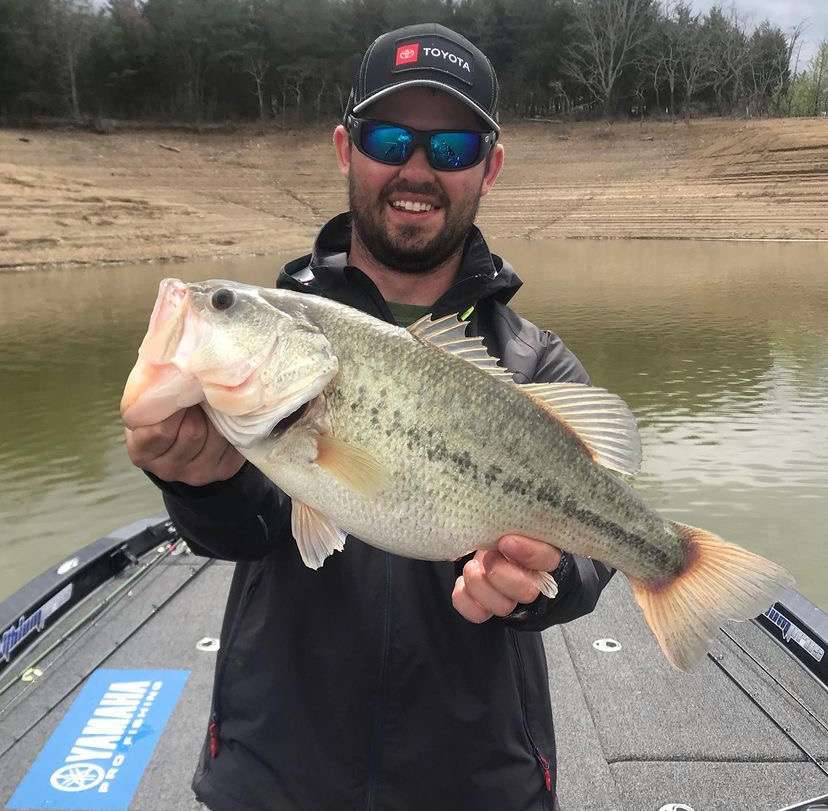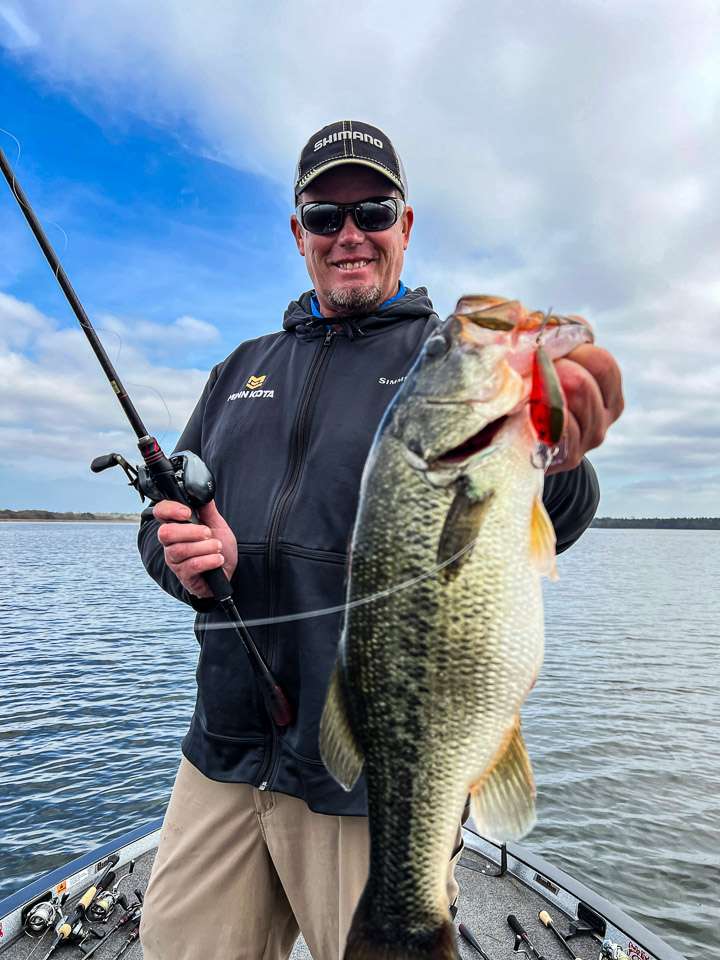
It’s the annual depth decline where reservoir water recedes like a falling tide, but its return is delayed for a few months. While waterfront homeowners appreciate the opportunity for dock/seawall maintenance and brush pile placement, the drawdown definitely creates new angling dynamics.
With manmade lakes lowered to “winter pool” to make room for the forthcoming spring rains and snow melt, shorelines, coves and shallow pockets look like a drained bathtub. Less water means less reachable cover, so fish gravitate to whatever rocks, stumps and laydowns remain submerged.
The challenge is that fall typically presents a disjointed picture, with fish constantly moving and looking to fill their bellies before winter’s stinginess dwindles their opportunities. That said, the drawdown is hardly a dooming scenario; rather, it can actually work to the angler’s advantage.
For starters, success begins with perception. Specifically, we tend to think about what a drawdown takes — depth and the various targets once fully or partially submerged. Drawdown levels vary by lake, but receding water turns a lot of previously viable habitat into dragonfly pedestals.
But think about it: Smaller playing fields mean less area for the fish to inhabit. From a time management standpoint, there’s no question the drawdown promotes efficiency.

Consider the plus side
“The way I look at the drawdown is that it condenses everything,” said Bassmaster Elite pro Skylar Hamilton. “You still have the same number of fish in the lake, you still have the same amount of bait in the lake, but you’ve taken away places they can go.
“That can make it easier on anglers because you don’t have as much area to cover — whether it’s a 2-foot drop or a 40-foot drop. You just have to adapt.”
Noting how his local east Tennessee fishery, Douglas Lake, sheds 30-plus feet each fall, Hamilton said the mostly barren bottom will occasionally reveal pre-impoundment relics like old house foundations, graveyards, etc. Typically, it’s rock, some more rock, a bunch of other rocks and, well, you get the picture.
“It’s kind of boring,” Hamilton joked. “It looks like the moon, but the fish don’t care what it looks like.”
Game planning definitely takes on a new dimension, as you simply have to remove some of your favorites from the hit list. Again, think addition by subtraction.
“You’re not going to be able to target fish the way you can on bank cover like laydowns or docks,” Hamilton said. “Some people may be disappointed, but for me, that’s just two things I don’t have to worry about.”
Fellow Elite Keith Combs notes that early in the drawdown cycle, increased current flowing through a lake stimulates feeding and predictably positions predators. Also, with moving water comes higher turbidity.
“On a lake that has a lot of clear water, whenever you get more dirty water, that always makes it easier to fish,” Combs said.
Looking for them
So where do fish go during a drawdown? Given the range of reservoir diversity, there’s no one-size-fits-all answer.
“Lakes that have a 2- to 3-foot drop, you still have a lot of stuff like laydowns that are still in the water; whereas in lakes that have extreme drawdowns, you can have a place where a fish has been living all summer that’s completely out of the water,” Hamilton said. “Those fish will relocate completely.
“On a place with a (more moderate drop), they might have to move trees, but there’s still a tree for them to be on; there seems to always be something left,” Hamilton continues. “But on a lake with an extreme drawdown, when you take all that away from them, they try to replace it with a rock pile or something else.”
Hamilton anchors much of his fall drawdown hope in his Lowrance ActiveTarget, which gives him a real-time look at what’s in front of him. Specifically, he looks for flatter banks and channel swings — places where fish can push bait.
“Bait is always important wherever you’re at, but on a body of water that’s drawn down, it seems like the fish relate to bait way more,” he said. “I don’t want to say they use it for cover, but it’s almost like they do. That’s because of the lack of other habitat.”
Combs said ditches, guts and drains become gold during the drawdown, especially as winter approaches.
“Typically, I’m looking for some kind of deep-water access; a channel, a bluff wall or a steeper bank,” Combs said of these pull-back areas. “With fall and winter, you’re going to have fronts coming through, so an area with deep access is always going to have more fish in it because they have lots of options.”
Another biggie — riprap. Similar to a bluff, the fish simply slide up and down with water fluctuations and various temperature preferences. Riprap lining a bridge causeway can be particularly attractive during a drawdown, as fish departing the shallows of its terrestrial terminus have an easy transition to comfortable depths.

What to offer
In terms of regionally appropriate baits, not much is off the table. There is the reality, however, that flipping, pitching and skipping type deals diminish the more a lake loses water. Bottom contact baits from Ned rigs to football jigs, drop shots to Carolina rigs deserve their place in the lineup, but you can’t go wrong by modeling the baitfish fall bass are chasing.
“I like to throw baits that mimic the size of bait they’re eating,” Hamilton said. “One of my favorites is a 1/2-ounce lipless bait like the Storm Arashi Vibe. There’s not much to get snagged on this time of year, you can cover a lot of water and it gets bites.”
Hamilton also likes a topwater walker when the water temperature’s at least 55 degrees and the fish are on flatter banks. Noting that the fish simply don’t have much in the way of “heavy cover” this time of year, he knows they’re looking up. When that bite fizzles, a jerkbait’s a clever tool for tempting fish holding under bait schools.
Combs also likes the lipless bait — for him, it’s the deep sound of a Strike King Redeye Tungsten 2 Tap. He’ll also throw a Strike King 1.5 squarebill anywhere he has 3 to 4 feet of water over riprap or anything solid to bump.
Most days, if Combs had to pick one bait for the drawdown, it’ll be a 1/2-ounce black/blue Strike King Hack Attack Jig with a matching Rage Craw trailer. He trusts this versatile package for everything from pitching to brush or isolated wood (moderate drawdown lakes) to casting against a bluff for a slow methodical fall.
Whatever he’s throwing, Combs manages the drawdown with a realistic mindset: “On some lakes, it makes it more difficult, especially for navigation. But if you look at the benefits of changing water color and bait concentration, you have to think about it to your advantage.”





